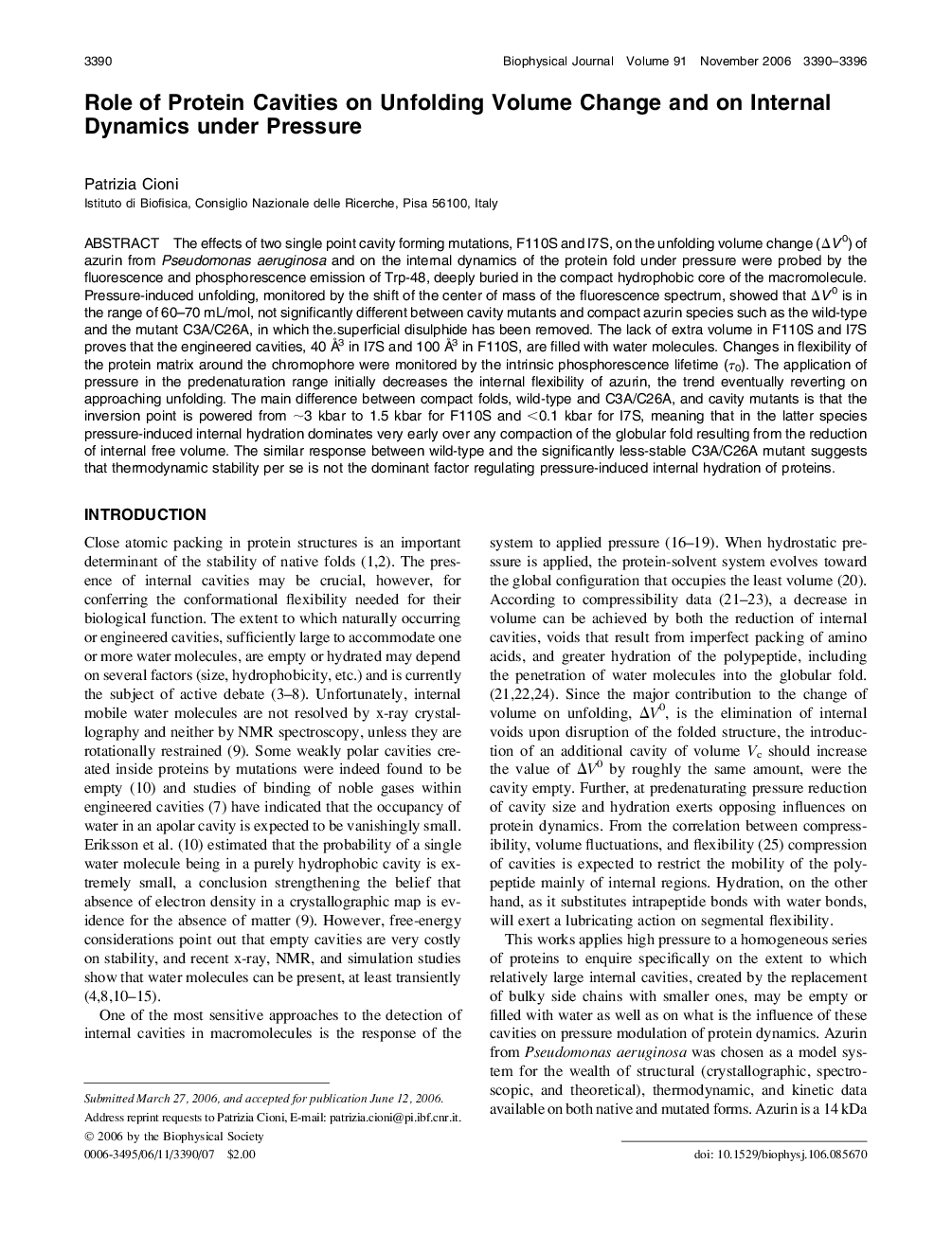| کد مقاله | کد نشریه | سال انتشار | مقاله انگلیسی | نسخه تمام متن |
|---|---|---|---|---|
| 1959890 | 1057947 | 2006 | 7 صفحه PDF | دانلود رایگان |

The effects of two single point cavity forming mutations, F110S and I7S, on the unfolding volume change (ΔV0) of azurin from Pseudomonas aeruginosa and on the internal dynamics of the protein fold under pressure were probed by the fluorescence and phosphorescence emission of Trp-48, deeply buried in the compact hydrophobic core of the macromolecule. Pressure-induced unfolding, monitored by the shift of the center of mass of the fluorescence spectrum, showed that ΔV0 is in the range of 60–70 mL/mol, not significantly different between cavity mutants and compact azurin species such as the wild-type and the mutant C3A/C26A, in which the superficial disulphide has been removed. The lack of extra volume in F110S and I7S proves that the engineered cavities, 40 Å3 in I7S and 100 Å3 in F110S, are filled with water molecules. Changes in flexibility of the protein matrix around the chromophore were monitored by the intrinsic phosphorescence lifetime (τ0). The application of pressure in the predenaturation range initially decreases the internal flexibility of azurin, the trend eventually reverting on approaching unfolding. The main difference between compact folds, wild-type and C3A/C26A, and cavity mutants is that the inversion point is powered from ∼3 kbar to 1.5 kbar for F110S and <0.1 kbar for I7S, meaning that in the latter species pressure-induced internal hydration dominates very early over any compaction of the globular fold resulting from the reduction of internal free volume. The similar response between wild-type and the significantly less-stable C3A/C26A mutant suggests that thermodynamic stability per se is not the dominant factor regulating pressure-induced internal hydration of proteins.
Journal: - Volume 91, Issue 9, 1 November 2006, Pages 3390–3396